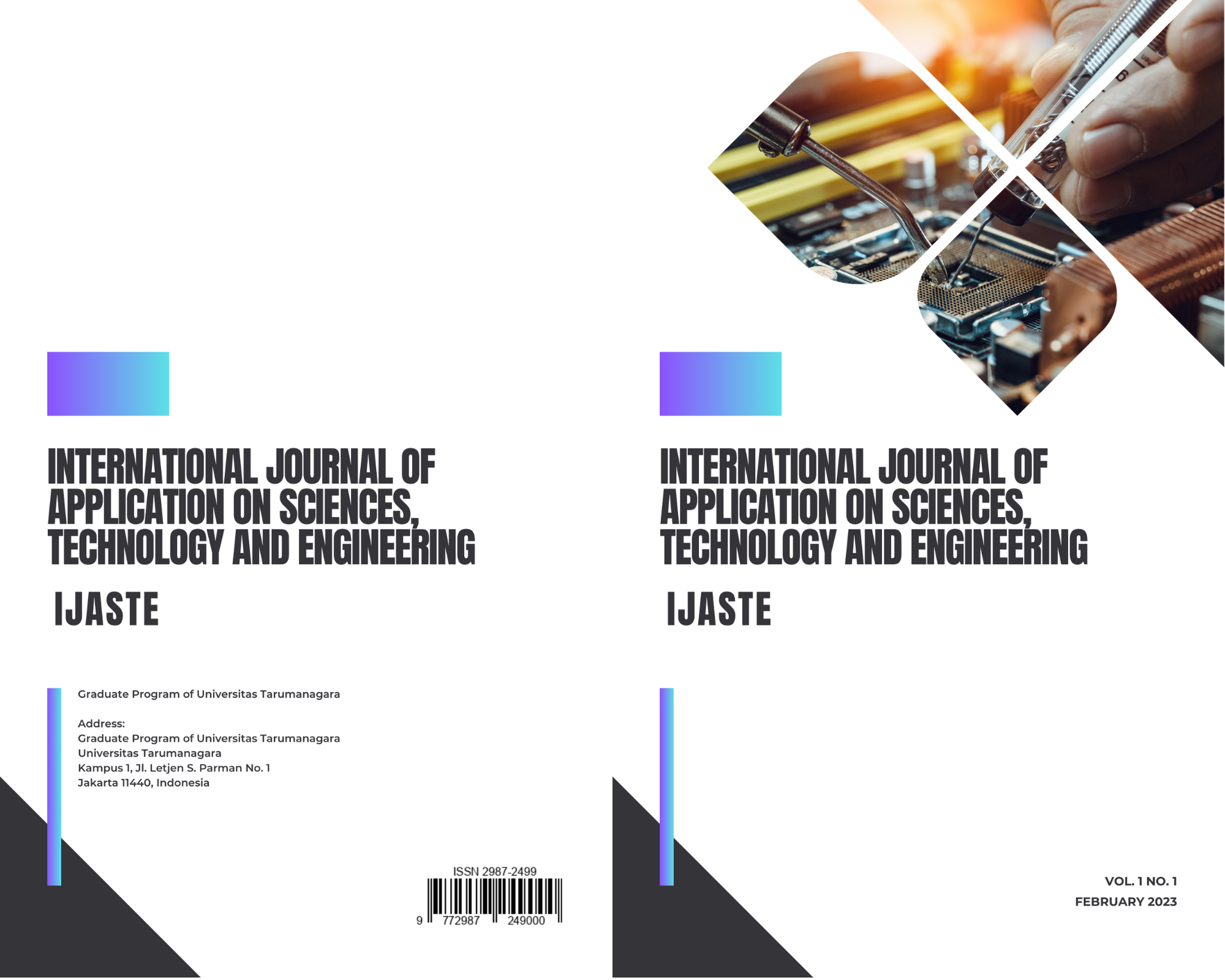Application of Mycelium Technology Panel in Depression Healing Space
Main Article Content
Abstract
The use of natural materials plays a role as a form of biophilic design for depression recovery buildings. This research aims to provide adequate healing facilities for depressed patients in Jakarta with Mycotech as the primary building material that can play a good role in the recovery process of depressed patients. The methods used to support this project are; 1) Symbiosis; 2) Biophilic design; and 3) Healing architecture. This research explains the application and the effect of using environmentally friendly Mycotech materials to heal depression patients. This research makes a new health facility with a series of therapeutic programs highlighting Mycotech, thus creating an unprecedented novelty. This research creates a platform (buildings and environment) that can help depression recovery by utilizing new technologies and not harming nature.
Article Details

This work is licensed under a Creative Commons Attribution-NonCommercial-ShareAlike 4.0 International License.
References
Sim dan J. Simanjuntak, Merawat Kesehatan Mental Keluarga, Tangerang: Yayasan Pelikan, 2012.
PDSKJI, "Indonesian Psychiatric Association," Architecture by Birds and InsectsPerhimpunan Dokter Spesialis Kedokteran Jiwa Indonesia, 14 Mei 2020. [Online]. Available: http://pdskji.org/home. [Accessed 12 Februari 2021].
Hana, “startup lingkungan,” 4 September 2021. [Online]. Available: https://www.mediastartup.id/2020/03/13/mycotech-startup-peduli-lingkungan-menyulap-limbah-petanian-menjadi-bahan-bangunan-dengan-miselium-jamur/.
F. N. Irbaha dan A. Kusumowidagdo, “Application of Biophilic Design to Improve,” Jurnal Seminar Nasional Envisi 2020: Industri Kreatif, pp. 146-158, 2020.
S. Azza dan D. A. R. Natalia, Application of the Concept of Healing Architecture in Type D Hospital in Kendal District, vol. 2 No 3, 2019.
L. A. Rizkiani dan P. Wardono, “Perancangan Fasilitas Rehabilitasi Mental untuk Penderita Depresi,” Jurnal Tingkat Sarjana bidang Senirupa dan Desain, pp. 1-6.
J. Yin, J. Yuan, N. Arfaei, P. J. Catalano, J. G. Allen and J. D. Spengler, "Effects of biophilic indoor environment on stress and anxiety recovery: Abetween-subjects experiment in virtual reality," Environment International, vol. 136, pp. 1-10, March 2020.
D. Ratamanjari, H. Setyawan dan L. Pramesti, “Rumah Sakit Jiwa dengan Konsep Healing Environment di Kota Semarang,” Arsitektura, vol. 13 , no. 1, pp. 1-10, April 2015.
C. F. Tanoni dan C. E. Mediastika, “Fasilitas Rehabilitasi bagi Penderita Depresi Berbasis Terapi Suara di Surabaya,” Jurnal eDimensi Arsitektur VII, vol. VII, no. 1, 2019.
A. Sutanto, Peta Motode Desain, Jakarta: Universitas Tarumanagara, 2020.
R. Trisno and F. Lianto, "Realization of Hybrid Concept and Symbiosis in Green Open Space (RTH) at Housing Complex RW (Neighborhood Councils) Pluit, Jakarta Utara, Indonesia," IOP Conf. Series: Journal of Physics, vol. 1179, pp. 1-7, 2019.
R. Trisno and F. Lianto, "Lao Tze and Confucius' philosophies influenced the designs of Kisho Kurokawa and Tadao Ando," City, Territory and Architecture, vol. 8, no. 8, pp. 1-11, 2021.
L. V. Wuaten, F. O. Siregar dan E. D. Takumansang, “Graha Pecinta Alam (Grapala) Simbiosis dalam Arsitektur, Kisho Kurokawa,” Jurnal Arsitektur DASENG UNSRAT Manado, pp. 1-9, 2014.
D. Ratamanjari, H. Setyawan dan L. Pramesti, “Rumah Sakit Jiwa dengan Konsep Healing Environment di Kota Semarang,” Jurnal Arsitektur, 2015.
R. Trisno, F. Lianto and N. K. Tishani, "STEAM Elementary School with the Concept of Creative Learning Space in Heidegger’s View," Journal of Design and Built Environment, vol. 21, no. 2, pp. 39-58, 2021.
U. I. Azizah and A. M. Jaya, "Ruang Publik untuk Kesehatan Mental," Jurnal Sains dan Seni ITS, 2016.
P. Downton, D. Jones, J. Zeunert and P. Roos, "Biophilic Design Applications: Putting Theory and Patterns into Built Environment Practice," 2017.
M. W. S. Annisa Mutia Sari, “(Annisa Mutia Sari, Pusat Rehabilitasi Gangguan Jiwa dan Skizofrenia dengan pendekatan arsitektur perilaku di Kabupaten Kulonprogo,” Jurnal Ilmiah Arsitektur dan Lingkungan Binaan, vol. 15, no. 1, pp. 188-196, 2017.
R. Trisno, K. Claudia and F. Lianto, "Spiritual Architecture in the Context of Java," ISVS e-journal, pp. 40-48, 2020.
E. Chrysikou, Architecture for psychiatric environments, London, 2014.
J. d. T. L. Alread, “Life Safety,” dalam Design Tech: Building Science for, Oxford, AIA, 2007, p. 41.
Y. Joye, "Architectural Lessons From Environmental Psychology: The Case of Biophilic Architecture. Review of General Psychology," Review of General Psychology, pp. 305-328, December 2007.
D. K. Brown, J. L. Barton and V. F. Gladwell, "Viewing Nature Scenes Positively Affects Recovery of Autonomic Function Following Acute-Mental Stress. Environmental Science & Technology," Environ Sci Technol, p. 5562–5569., 16 April 2013.
I. Biederman and E. Vessel, "Perceptual Pleasure and the Brain," American Scientist, pp. 249-255, May 2006.
J. Barton and J. Pretty, "What Is the Best Dose of Nature and Green Exercise for Improving Mental Health.," Environmental Science & Technology, p. 3947–3955, March 2010.
R. S. Ulrich, R. F. Simons, B. D. Losito, E. Fiorito, M. A. Miles and M. Zelson, "Stress recovery during exposure to natural and urban environments," Journal of Environmental Psychology, vol. 11, no. 3, p. 201–230, September 1991.
S. Lichtenfeld, A. J. Elliot, M. A. Maier and R. Pekrun, "Fertile Green: Green Facilitates Creative Performance.," Personality and Social Psychology Bulletin, pp. 784-797, 16 March 2012.
Y. Tsunetsugu, Y. Miyazaki and H. Sato, "Physiological Effects in Humans Induced by the Visual Stimulation of Room Interiors with Different Wood Quantities," Journal of Wood Science, pp. 11-16, 2007.



